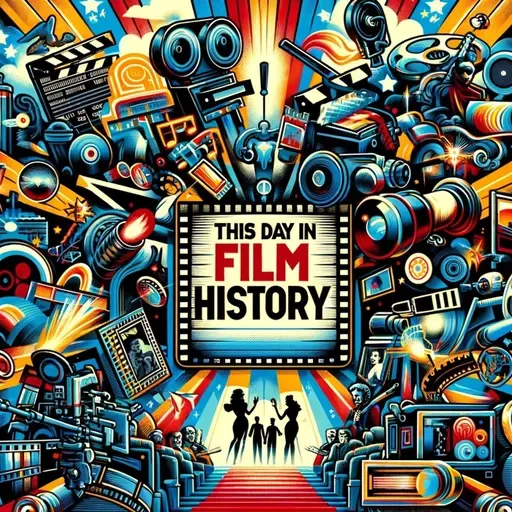
About
On November 3rd, 1956, the iconic film "The Wizard of Oz" made its television debut on CBS. This landmark event marked the beginning of a beloved tradition that would continue for decades, with the film being broadcast annually on television.
"The Wizard of Oz," based on the children's novel by L. Frank Baum, was originally released in theaters in 1939. The film, directed by Victor Fleming, starred Judy Garland as Dorothy Gale, a young girl from Kansas who is transported to the magical land of Oz by a powerful tornado. Along her journey to find a way back home, Dorothy encounters a cast of colorful characters, including the Scarecrow (Ray Bolger), the Tin Man (Jack Haley), and the Cowardly Lion (Bert Lahr), who join her on her quest to meet the Wizard of Oz.
Despite its initial modest success at the box office, "The Wizard of Oz" gained popularity over the years through various re-releases and eventually became a cultural phenomenon. The film's transition to television in 1956 played a significant role in solidifying its status as a timeless classic.
The first television broadcast of "The Wizard of Oz" was a major event, attracting a massive audience and setting a new standard for family entertainment on television. The film's vibrant Technicolor visuals, memorable songs (such as "Over the Rainbow"), and heartwarming story captivated viewers of all ages.
The annual television broadcast of "The Wizard of Oz" became a cherished tradition for many families, with generations gathering together to watch the film year after year. This tradition helped to introduce the film to new audiences and contributed to its enduring popularity.
Over the years, "The Wizard of Oz" has been recognized for its significant contributions to cinema history. The film's innovative use of Technicolor, its seamless blending of fantasy and reality, and its timeless themes of friendship, courage, and the search for one's true home have cemented its place as a masterpiece of Hollywood's Golden Age.
In 1989, "The Wizard of Oz" was added to the United States National Film Registry by the Library of Congress, recognizing it as a film of great cultural, historical, and aesthetic significance. The film has also been ranked among the greatest movies of all time by various publications and organizations, including the American Film Institute.
The television debut of "The Wizard of Oz" on November 3rd, 1956, marked a turning point in the film's history, as it transformed from a beloved movie to a cultural institution that has endured for generations. Its annual television broadcast has become a cherished tradition, ensuring that the magic of Oz continues to captivate audiences year after year.
Some great Deals https://amzn.to/49SJ3Qs
For more check out http://www.quietplease.ai
This content was created in partnership and with the help of Artificial Intelligence AI
"The Wizard of Oz," based on the children's novel by L. Frank Baum, was originally released in theaters in 1939. The film, directed by Victor Fleming, starred Judy Garland as Dorothy Gale, a young girl from Kansas who is transported to the magical land of Oz by a powerful tornado. Along her journey to find a way back home, Dorothy encounters a cast of colorful characters, including the Scarecrow (Ray Bolger), the Tin Man (Jack Haley), and the Cowardly Lion (Bert Lahr), who join her on her quest to meet the Wizard of Oz.
Despite its initial modest success at the box office, "The Wizard of Oz" gained popularity over the years through various re-releases and eventually became a cultural phenomenon. The film's transition to television in 1956 played a significant role in solidifying its status as a timeless classic.
The first television broadcast of "The Wizard of Oz" was a major event, attracting a massive audience and setting a new standard for family entertainment on television. The film's vibrant Technicolor visuals, memorable songs (such as "Over the Rainbow"), and heartwarming story captivated viewers of all ages.
The annual television broadcast of "The Wizard of Oz" became a cherished tradition for many families, with generations gathering together to watch the film year after year. This tradition helped to introduce the film to new audiences and contributed to its enduring popularity.
Over the years, "The Wizard of Oz" has been recognized for its significant contributions to cinema history. The film's innovative use of Technicolor, its seamless blending of fantasy and reality, and its timeless themes of friendship, courage, and the search for one's true home have cemented its place as a masterpiece of Hollywood's Golden Age.
In 1989, "The Wizard of Oz" was added to the United States National Film Registry by the Library of Congress, recognizing it as a film of great cultural, historical, and aesthetic significance. The film has also been ranked among the greatest movies of all time by various publications and organizations, including the American Film Institute.
The television debut of "The Wizard of Oz" on November 3rd, 1956, marked a turning point in the film's history, as it transformed from a beloved movie to a cultural institution that has endured for generations. Its annual television broadcast has become a cherished tradition, ensuring that the magic of Oz continues to captivate audiences year after year.
Some great Deals https://amzn.to/49SJ3Qs
For more check out http://www.quietplease.ai
This content was created in partnership and with the help of Artificial Intelligence AI